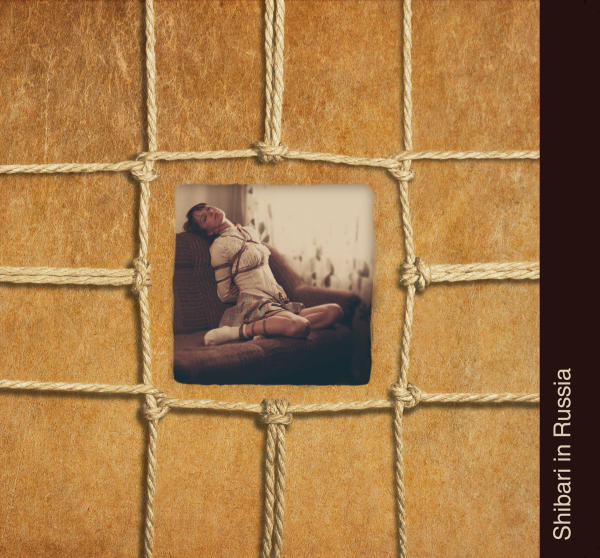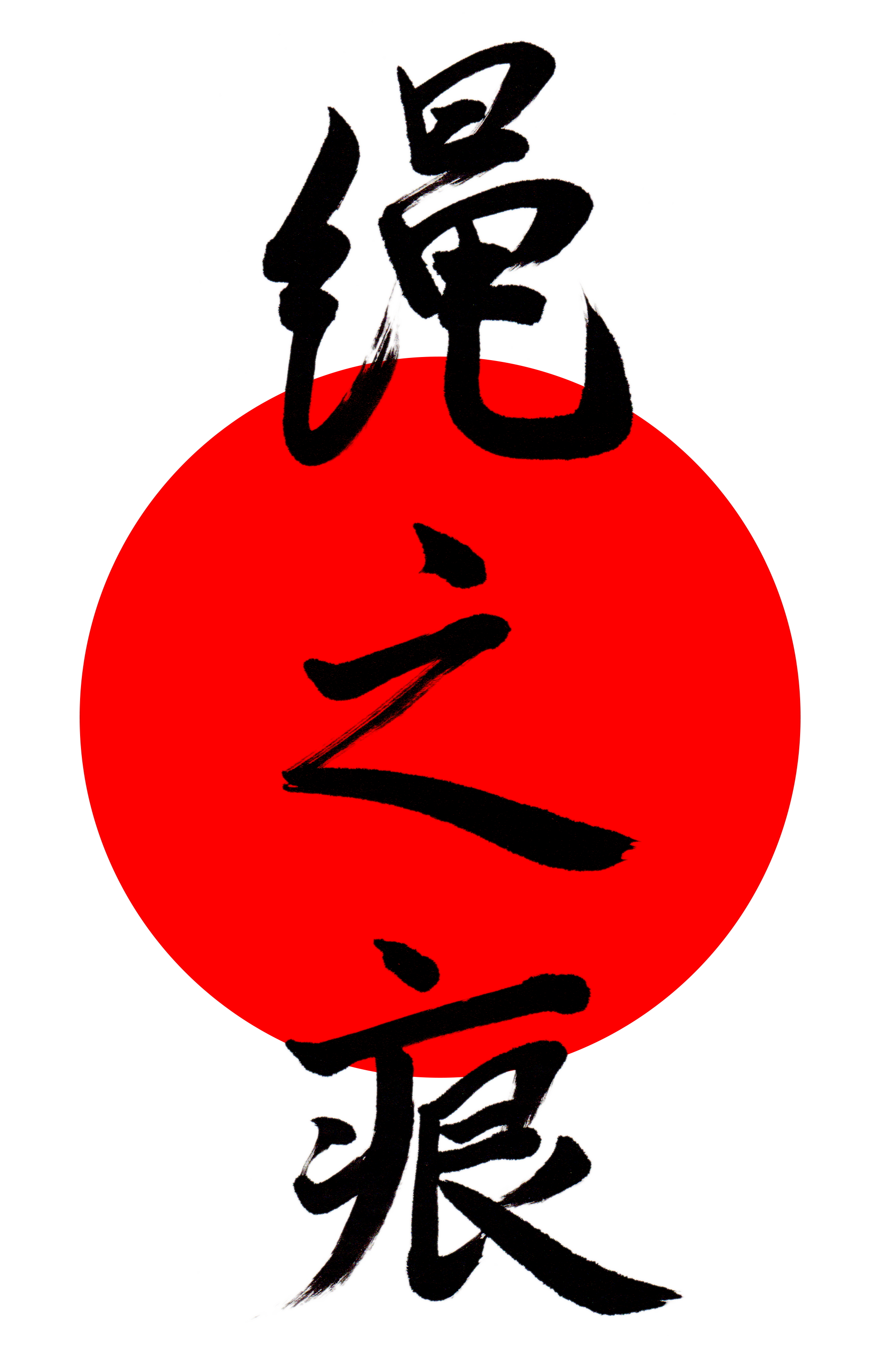The following post is from 天つ縄 (Amatsunawa), the company the produces JBO-free kinbaku ropes. It’s re-posted here with permission
Be aware of potential hazards associated with Jute Batching Oil (JBO) used extensively in jute yarn because it is cheap. This is a toxic mineral oil containing hydrocarbons in the C15–C20 range. This does not imply using rope containing JBO will result in skin cancer. For example, 10–15% of lung carcinoma victims never smoked and many smoking 20 cigarettes per day won’t show any symptoms.
Some yarns are produced for household goods, where JBO smell is not acceptable. Carpet Backing grade (CB) is used on Van de Wiele looms. This yarn is spun for weaving with different batching oil content and twist than is spun for winding into rope.
Batching oil is an essential ingredient because it softens wiry fibre and adds strength. The batching and piling occurs before the carding process aligns jute filaments parallel. Drawing then moves the filaments so they regularly overlap. At spinning, the oiled filaments are twisted and compressed together into a single ply. Any multiple ply construction is made afterwards by counter–twisting single plies together.
Oil content is critical. Just like in human hair, too little oil makes it dry and brittle. Too lubricated will make it feel greasy. Too much oil can also weaken the yarn because of slippage. The filaments must bind properly so that cohesion is maximized.
Removing JBO from rope by boiling, steaming or baking damages integrity. If the batching oil is removed, the first time you apply longitudinal tension to the rope you will hear it creaking and cracking. This is the sound of microtears as the filaments move and break because the cohesive medium has been removed. If you wish to dye your jute, it is recommended to keep temperatures low.
A method to lessen the JBO smell is to expose rope to sunlight or ultraviolet radiation. Because jute remains photosensitive long after it is cropped, photochemical changes to the middle lamella reduce cohesion between cells in the filaments. Excessive temperature also weakens jute, so it should be kept away from heat sources.
Vegetable Oil Treated (VOT) application as a substitute to JBO is not without complexity. Some mills will use unsustainable palm oil, or castor oil, etc., or mix it with lower grades of soybean oil. These can lead to unwelcome rancidity. Gas chromatography–mass spectroscopy analysis can identify what has been used.
To eliminate the chances of the oil becoming rotten, it is critical that soybean seeds are thoroughly cleaned and dried before being cold or expeller pressed. Heat at this stage of the extraction process encourages oxidants. Expeller-pressed soybean oil retains more tocopherols and phytosterols, providing natural antioxidants to prevent rancidity.
As yarn leaves the spinning machinery, it is coated to hold the fibers in position and keep hairiness to a minimum. For industrial products, many mills will skip this step to reduce costs. A common choice of coating is PVA (polyvinyl alcohol), a colorless, odorless water-soluble polymer used in papermaking and textiles giving a slightly starch–stiff feel. Amatsunawa specification yarn is coated with tapioca starch extracted from the cassava root to keep the yarn 100% food grade, recyclable and sustainable.
Good rope is easy and light to handle, and does not produce dermatological problems. It should be strong enough for the intended purpose and not leave a dust of dry, short–filament fiber loss. However, jute will always produce hair and loose fiber. Batching oil and coating after spinning reduces both hairiness and fiber loss.
Of all conditioning methods tested, tumble drying has proven to be the gentlest and prevents the batching oil and coating being lost. Using a ‘butter’, the outside of the rope is coated and softened with a dermatologically–friendly conditioning. Tumble drying also removes loose hair. The best temperature setting is enough to blend the butter into the rope without extracting the batching oil. It should not be hot.
Before tumble drying, rope ends must be secured to prevent unraveling. One method is to unwind the strands ~5cm, make a simple overhand knot, then tighten and roll it towards the end of the line. Because the strands are separated, the knot compresses better. Avoid putting the rope in a bag, as this will not allow loose fiber to escape.
Butter is made by blending 100% cold–pressed jojoba oil with 100% beeswax, gently melted together in a pan and poured into a strong glass to cool. Almond oil is a cheaper alternative, but is susceptible to rancidity. For this reason, coconut oil should never be used. Tsubaki oil may be used, but it is expensive.
The oil–wax blend determines the feel of the rope in handling. Too much oil makes the mix penetrate too deep, making the rope heavier and greasy. Too much wax makes the rope sticky and difficult to work with. A blend of approx. 3 parts oil to 1 part wax has proven to be the best.
The butter should be used sparingly and added as a lump to the loose rope in the final tumble drying cycle. It is recommended to only use 2 to 3gm of butter per kg of rope. As loose fibers come out of the rope, they may clog the tumble dryer filter. This should be cleaned between cycles. 3 x 30 minute tumble drying cycles remove most loose fiber.
After tumbling, the ropes will be tangled and covered in loose fibers. Avoid wearing dark clothing. Do not pull aggressively on the ropes. Lay the bundle on a surface that is easy to vacuum and gently coax each rope free. Hang over a spar and jerk each line to remove loose fibers.
The ropes are now ready for singeing remaining hairs through a clean blue flame, e.g. a camping stove. Pass the rope through the flame at approx. 40cm per second. If slower, you risk scorching and damaging the fibers. Be aware that loose fiber can easily ignite.
Wipe the ropes with a 100% cold–pressed jojoba oil laden linen cloth. Be careful not to apply too much. Each rope should be wiped down once in both directions, because it will twist in one direction and untwist again in the other. Hang the ropes over a spar for 24 hours to let the oil soak into the surface.
You will notice a distinctly yellow flame and significantly more black soot with JBO treated rope. The cloth used to wipe down the rope will also be much dirtier.
Rope conditioning is a repeatable process. Sense when your rope is drying and becoming hairier with use. Occasional repeating of the blue flame singing and light application of jojoba oil will help to prolong the lifetime of the rope.
Please note that the tumble drying process and conditioning method will loosen the rope lay by 10 to 15%.
Understanding how high quality, conditioned, pliant filaments retain strength, it is useful to know how to avoid breaking them. Tensioning rope across sharp and small diameter fixings will increase the chances of breaking filaments. Do not ‘break–in’ rope by rubbing it aggressively against a hard surface to remove hairs and make it smoother, because this breaks filaments and compromises the strength of the rope.
Sources:
- Jute dermatitis, Curjel & Acton 1924
- Dermatoses in jute workers, Kinnear, Rogers, Finn & Mair 1955
- Cancer hazard from mineral oil used in the processing of jute, Roe, Carter & Taylor 1967
- Occupational skin hazards of mineral oils, Bhar 1972
- Certain PAHs and heterocyclic compounds. In: Monograph on the evaluation of carcinogenic risk of chemicals to man, International Agency for Research on Cancer 1973
- Evaluation of carcinogenic effect of mineral oil used in the processing of jute fibers, Mehrotra & Saxena 1979
- Induction of benzo[a]pyrene hydroxylase in skin and liver by cutaneous application of jute batching oil, Kumar, Antony & Mehrotra 1982
- The evaluation of carcinogenic of certain petroleum hydrocarbon fractions, Suskind, Stemmer & Barkley 1983
- Carcinogenicity of petroleum lubricating oil distillates, Halder, Warne, Little & Garvin 1984
- Quantification of tumor initiating effect of jute batching oil and its distillates over mouse skin, Agarwal, Kumar, Shukla, Antony & Mehrotra 1985
- Polyaromatic Hydrocarbon Profile of a Mineral Oil (JBO–P) by Gas Chromatography, Agarwal, Kumar & Mehrotra 1986
- Jute batching oil: a tumor promoter on mouse skin, Mehrotra, Kumar, Agarwal & Antony 1987
- Evaluation of carcinogenic effect of jute batching oil (JBO–P) fractions following topical application to mouse skin, Agarwal, Shukla, Kumar & Mehrotra 1988
- Carcinogenic Property of JBO(P) Variety of Jute Batching Oil, Mehrotra, Kumar & Antony 1988
- Role of GSSG–reductase and a thiol oxidant diethylmaleate (DEM) in skin tumorigenesis induced by jute batching oil, Antony, Kumar & Mehrotra 1989
- Handbook of Fiber Chemistry, Second Edition, Revised and Expanded (International Fiber Science and Technology), Lewin & Pearce 1998
- On the Mechanical Properties and Uncertainties of Jute Yarns, Ullah, Shahinur & Haniu 2017
© AMATSUNAWA 2019












Leave A Comment